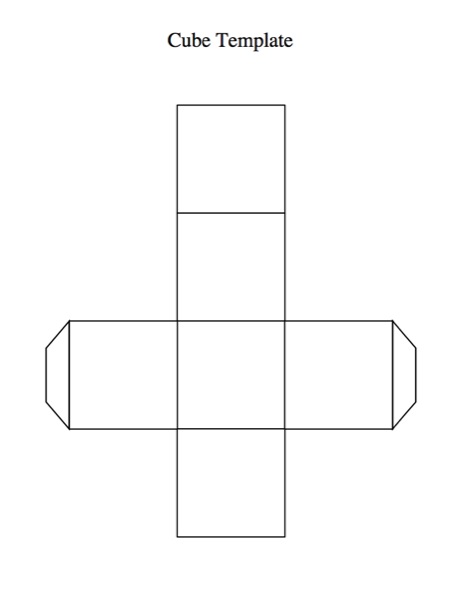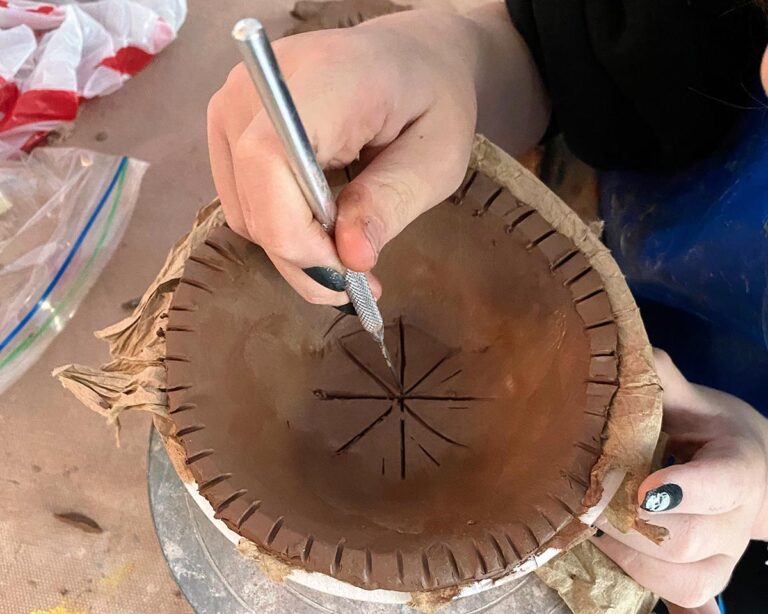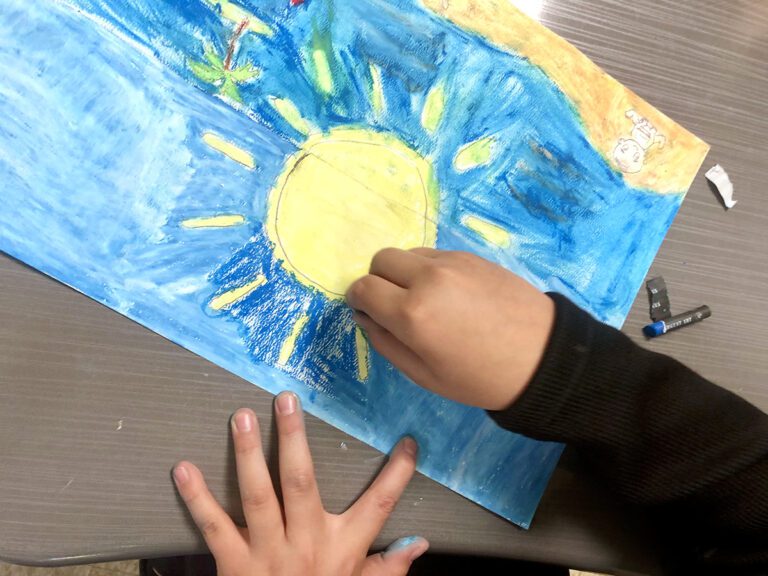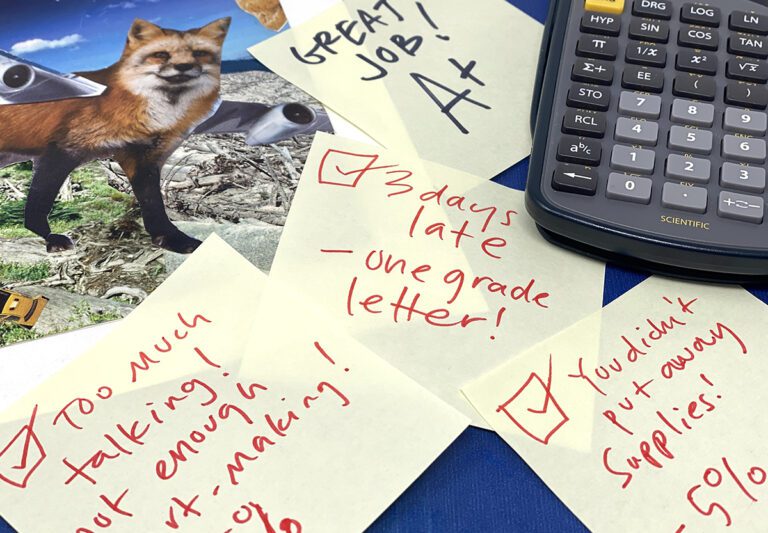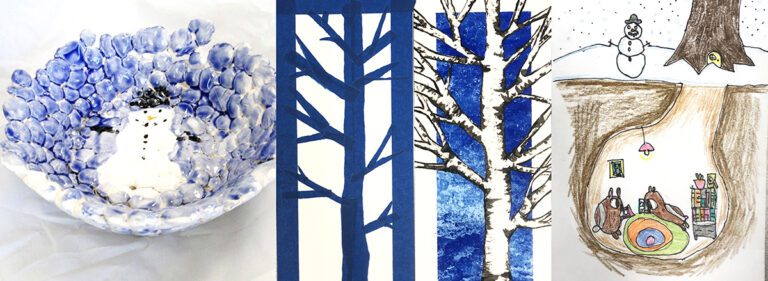Cubing is an instructional strategy that asks students to work with a singular topic in a variety of ways. It’s traditionally used as a writing strategy to help students develop prewriting skills. The idea is that there is a paper cube with a different word on each side. Examples of the words include describe, compare, analyze, associate, apply and argue (for or against.) Check out this website for more information on cubing.
How can the cubing strategy be used in the art room?
Cubing can be used in the art room as a strategy to help students develop creative skills. The example below uses the cubing strategy as a creative and fun tool to introduce new concepts to students. They practice creating while using the cube.
This ceramic cubing activity will be used with 6th graders as an introduction to their clay project. The clay project is making a Grant Wood-inspired landscape out of clay. They need to know how to complete all six concepts before they start their project. Download my Ceramic Unit Cube by clicking on the template below.
Steps for Creating a Cubing Activity
1. Students create their own cube using the blank cube template.
Photocopy the template onto cardstock. You can download this PDF of a blank cube by clicking on the image below.
2. Have students write in the activity/word/concept on each side of the cube.
See my sample above to look at the placement of these concepts.
Here are the concepts I used for my cube:
- Make 5 spheres.
- Throw a slab. Roll a slab.
- Make 3 cubes.
- Roll 3 coils.
- Make a pinch pot.
- Score and slip two coils together in a circle.
3. Students can add color to their cube using colored pencils, markers, or crayons.
If you don’t have time, this step could be skipped. But it does make the cubes more fun to use!
4. Students assemble the cube using scissors and glue.
Make sure to tell your students to cut carefully. It can be frustrating to get the cube to fit together well otherwise.
5. Students roll the cube and complete each activity using clay.
Of course, the last step is to use the cube to do the activities!
You could create cubes for so many different concepts and techniques in your classroom.
Have you ever used the cubing strategy in your classroom?
What other concepts or topics could you use cubing for?
Magazine articles and podcasts are opinions of professional education contributors and do not necessarily represent the position of the Art of Education University (AOEU) or its academic offerings. Contributors use terms in the way they are most often talked about in the scope of their educational experiences.

